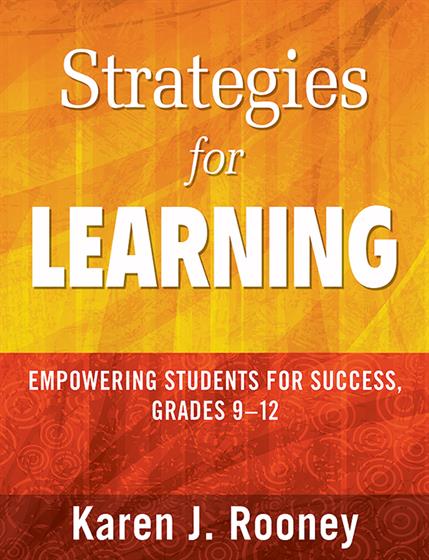Hands-on, Practical Guidance for Educators
From math,
literacy, equity, multilingual learners, and SEL, to assessment, school counseling,
and education leadership, our books are research-based and authored by experts
on topics most relevant to what educators are facing today.

Strategies for Learning
Empowering Students for Success, Grades 9-12
By:
Karen J. Rooney
Give struggling students the study skills they need to achieve across the curriculum!
In this book, Karen Rooney, Ph.D., offers general and special education teachers field-tested learning strategies to help struggling learners. Designed for students with or without learning disabilities, these strategies can improve cross-curricular skills in areas that include reading, writing, spelling, and math, and help teachers to:
- Engage students in the learning process
- Provide students with an effective skill set for all content areas
- Improve motivation, increase comprehension, and foster confidence
- Offer intense, explicit, and reiterative systems to help students "learn how to learn"
- Work with entire classes or individuals
Product Details
- Grade Level: 9-12
- ISBN: 9781412972864
- Published By: Corwin
- Year: 2009
- Page Count: 160
- Publication date: December 10, 2009
Review Copies
This book is not available as a review copy.


